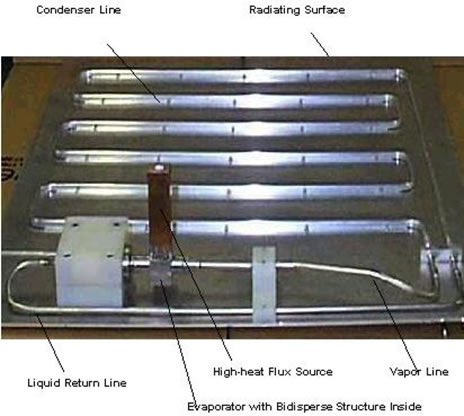The thermal subsystem is responsible for maintaining the temperatures of various components at an appropriate level. The solar panels are capable of operating effectively in a temperature range from -150 to 110 degrees Celsius. The absorbed heat was taken as the wasted solar energy (not converted to electricity) and found to be about 9.4 GW absorbed by a single satellite’s solar panels. The heat radiated by the dark side of the solar panels was calculated using the Stefan-Boltzmann equation shown below.

In order to radiate all the heat absorbed away from the solar panels and maintain it at a safe operating temperature, the emissivity of the rear side of the panels had to be chosen to be relatively high. Thus, the rear side of the solar panels must be coated with a highly radiative substance, commonly used as an inexpensive and passive method of thermal control. Given that the satellite orbit is designed to keep the satellite in view of the Sun at almost all times, the lower values of the operational temperature range do not have to be considered; the primary concern is elimination of excess heat.
The main satellite body must also have methods of thermal control. The use of internal electronics which produce waste heat complicates the issue beyond the simple consideration necessary for the solar panels. However, a combination of passive multilayer insulation over any components that must be kept warm, in conjunction with active heat piping to route excess heat to radiators, should provide sufficient thermal control.

